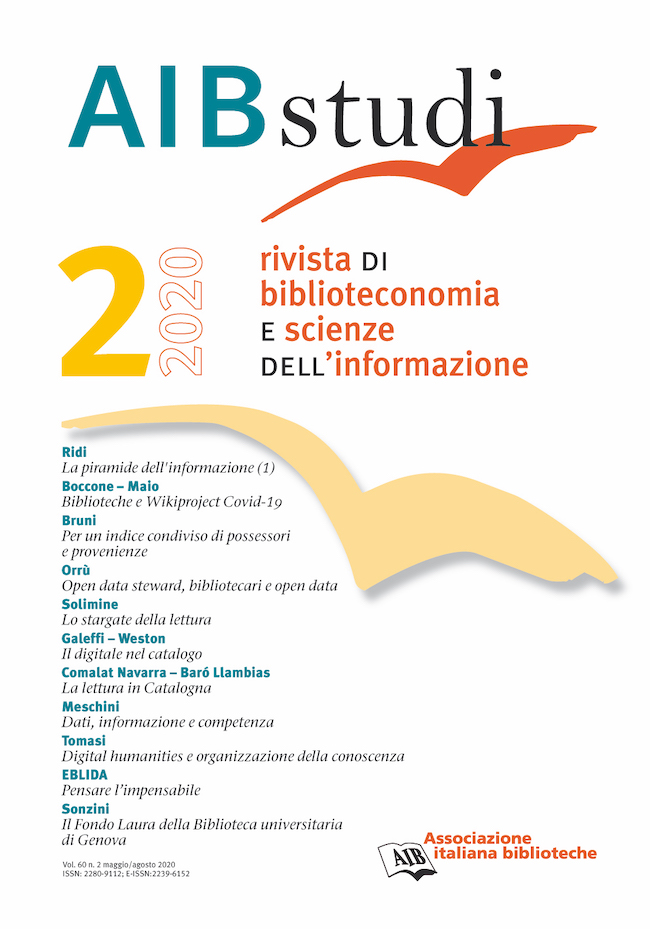<em>Digital humanities</em> e organizzazione della conoscenza: una pratica di insegnamento nel LODLAM
DOI:
https://doi.org/10.2426/aibstudi-12068Parole chiave:
linked open data, LAM, knowledge organizationAbstract
La mancanza di una definizione unanimemente condivisa su cosa significhi insegnare digital humanities (DH) ci permette di riflettere su obiettivi e metodologie formative, con l’obiettivo di ragionare sull’identità dell’umanista digitale. Il corso di laurea magistrale internazionale in Digital humanities and digital knowledge (DHDK), attivo presso l’Università di Bologna, ha lo scopo di contribuire alla discussione, proponendo un possibile modello di insegnamento delle DH.
Data l’esperienza di questo progetto didattico, il corso di Knowledge organization and cultural heritage (KO and CH), una delle attività obbligatorie del primo anno del corso di laurea, è stato progettato avendo in mente un principio: enfatizzare il ruolo delle teorie, metodologie e tecniche delle DH nell’insegnare come affrontare quel percorso che va dalla creazione dei dati alla rappresentazione della conoscenza, e gestire il processo come un flusso di lavoro iterativo in ottica progettuale.
Questo articolo mira a introdurre lo scopo e il contenuto del corso di KO and CH. In particolare, si vuole focalizzare sulle linee guida richieste per creare un progetto nel contesto dei linked open data, lavorando su dati, modelli e metodi provenienti dal dominio di biblioteche, archivi e musei (LODLAM). I principi che governano il percorso necessario a produrre LOD sono affrontati nei termini della riflessione sulla metodologia per la gestione dei sistemi di KO nel contesto del LAM. L’uso di teorie e metodologie delle DH, a livello di interpretazione delle memorie del patrimonio culturale, è il valore aggiunto alla progettazione, modellizzazione e implementazione del lavoro a progetto.
Downloads
Pubblicato
Come citare
Fascicolo
Sezione
Licenza
Copyright (c) 2020 AIB studi

Questo lavoro è fornito con la licenza Creative Commons Attribuzione - Condividi allo stesso modo 4.0.









